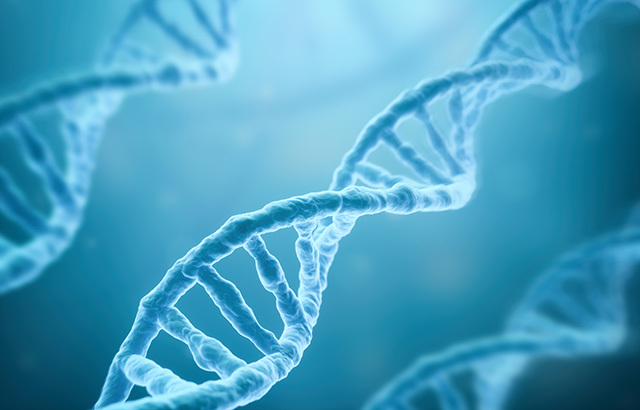DNA discovery could have implications for mitochondrial donation treatment
Mitochondria, the ‘batteries’ that produce our energy, interact with the cell’s nucleus in subtle ways previously unseen in humans, according to research involving academics from Queen Mary University of London.

The study, led by the University of Cambridge with Queen Mary scientists and published in the journal Science, describes the architecture of the mitochondrial genome which shows variation between these cellular batteries even within the same cell. It also demonstrates connections between nuclear DNA and mitochondrial DNA to nuclear DNA which may need further investigation in potential donors for the recently-approved mitochondrial donation treatment.
The research is the first major population study to arise from data collected as part of the 100,000 Genomes Project, which collects genetic data from patients through the NHS with the aim of transforming the way people are cared for and providing a major new resource for medical research.
“The involvement of the 100,000 Genomes Project in major discoveries like this demonstrates the importance of large-scale, carefully collected datasets with whole genome sequencing that enable new biological insights which then pave the way for major healthcare transformation” says Professor Mark Caulfield, Co-Director of Queen Mary’s William Harvey Research Institute and Chief Executive of Genomics England.
Mitochondria may not be readily interchangeable
Almost all of the DNA that makes up the human genome – the body’s ‘blueprint’ – is contained within our cells’ nuclei. This is referred to as ‘nuclear DNA’. Among other functions, nuclear DNA codes for the characteristics that make us individual as well as for the proteins that do most of the work in our bodies.
Our cells also contain mitochondria, often referred to as the ‘batteries’ that provide the energy for our cells to function. Each of these mitochondria is coded for by a tiny amount of ‘mitochondrial DNA’. Mitochondrial DNA makes up only 0.1 per cent of the overall human genome and is passed down exclusively from mother to child.
Until now, scientists had thought that mitochondria were readily interchangeable, serving only to power our bodies, and so an individual’s mitochondria could be replaced with those from a donor with no consequences. However, in this new study, researchers compared mitochondrial and nuclear DNA from tens of thousands of people and found that mitochondria may be fine-tuned to the nucleus.
Half of the population may have mitochondrial DNA mutations
The researchers studied over 1,500 mother-child pairs and found that just under a half (45 per cent) of individuals within these pairs harboured mutations affecting at least 1 per cent of their mitochondrial DNA.
In most people, genetic variants in both our nuclear and mitochondrial DNA come from the same part of the world. However, in around one in 40 people in the UK sample, the mitochondrial DNA and nuclear DNA did not have matching ancestries. For example, the nuclear DNA could be European whilst the mitochondrial DNA is Asian. This happens because at some point in the maternal lineage, there was a mother from a different ethnic background.
“This discovery shows us that there’s a subtle relationship between the mitochondria and nuclei in our cells that we’re only just starting to understand,” says Professor Patrick Chinnery, Head of the Department of Clinical Neurosciences at the University of Cambridge and Wellcome Trust Principal Research Fellow. “What this suggests to us is that swapping mitochondria might not be as straightforward as just changing the batteries in a device.”
Implications for mitochondrial donation treatment
The findings could have implications for mitochondrial donation treatment (also known as mitochondrial replacement therapy), says Professor Chinnery. This technique is now licenced for use in the UK to prevent the transmission from mother to child of potentially devastating mitochondrial diseases. It involves substituting a mother’s nuclear DNA into a donor egg while retaining the donor’s mitochondria.
“Mitochondrial replacement therapy is an important new treatment to enable mothers to have children free from terrible mitochondrial diseases, which arise because of severe mutations in mitochondrial DNA,” says Professor Chinnery.
“Our work suggests we’ll need to look carefully at this new treatment to make sure it does not cause unexpected health problems further down the line. It may mean that doctors will need to match the nuclear genome and mitochondrial genome of mitochondrial donors, similar to an organ transplant.”
The team has now begun work looking at those people whose mitochondrial DNA does not match their nuclear DNA to see if this mismatch increases the likelihood that they will be affected by health problems later in life.
The research was largely funded by the NIHR, Wellcome, the MRC and Genomics England.
More information
- Research paper: Wei, W et al. Germline selection shapes human mitochondrial DNA diversity. Science; 24 May 2019; DOI: 10.1126/science.aau6520
Related items

2 October 2025
For media information, contact:

